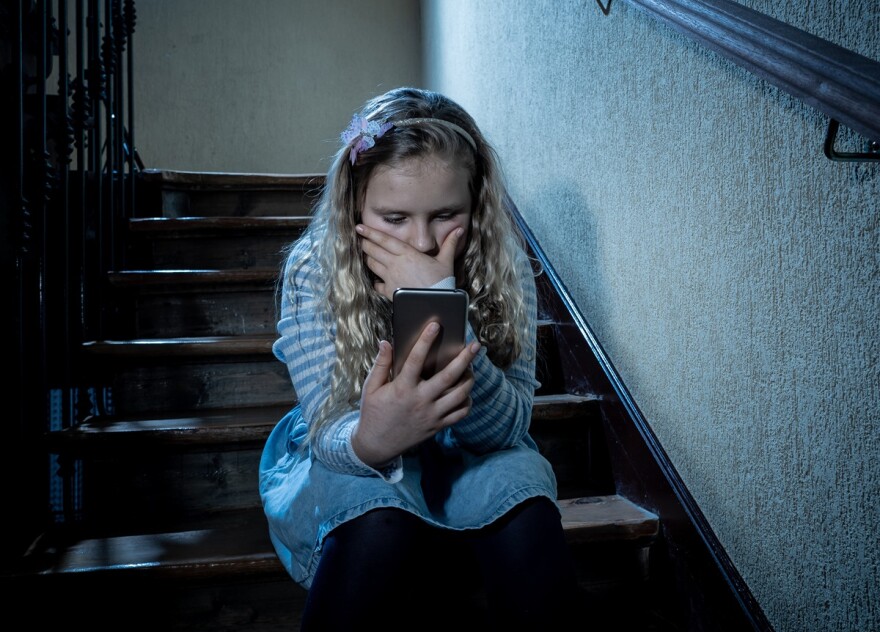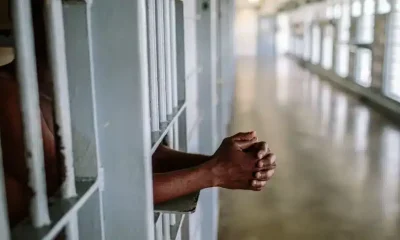News
The Alarming Rise of Child Pornography and Its Devastating Impact on Society

- Child pornography cases are increasing globally, fueled by online exploitation and dark web networks.
- Victims suffer long-term psychological trauma, while law enforcement struggles to combat the growing threat.
- Stronger laws, tech monitoring, and global cooperation are crucial to tackling this crisis.
Child pornography is one of the most heinous crimes in the world, a clear violation of human rights and an atrocity that leaves irreversible trauma in its wake.
EKO HOT BLOG reports that with advancements in technology and the increasing use of the internet, child pornography has unfortunately seen a significant rise in recent years, becoming a global crisis. The pervasive nature of this crime undermines the safety and well-being of children, causes profound emotional and psychological harm to its victims, and poses a serious challenge for law enforcement and policymakers worldwide.
This report delves into the alarming rise of child pornography, explores its devastating impact on individuals and society, and discusses the ongoing efforts to combat this grave issue.
EDITOR’S PICKS
- 45% of Nigerian Girls Become Mothers Before 18 — World Bank
- ECOWAS Faces Historic Defection as Three West African Nations Withdraw
- Netanyahu to Meet Trump at White House Next Week
Defining Child Pornography
Child pornography refers to the production, distribution, and possession of sexually explicit content involving minors (under the age of 18). This includes images, videos, and other forms of media that depict children in sexualized contexts. In addition to the abuse captured in such content, these crimes also involve the exploitation and trafficking of children, often through manipulation, coercion, or force.
It is essential to note that the legal definitions of child pornography vary by country, but the core principle remains the same: any material that exploits children sexually is considered illegal, morally reprehensible, and a violation of fundamental human rights.

The Increasing Incidence of Child Pornography
Over the past two decades, there has been an alarming rise in the number of cases of child pornography, largely attributed to the widespread availability of the internet. The anonymity provided by the digital world has facilitated the distribution and consumption of such material on a scale that was previously unimaginable.
Growth of the Dark Web: A significant portion of child pornography trafficking occurs in the dark web, a hidden part of the internet not indexed by search engines. The dark web provides a secure environment for perpetrators to exchange child exploitation material without fear of detection by law enforcement. The anonymity of cryptocurrency transactions further complicates efforts to trace and prosecute offenders.
Social Media and Messaging Platforms: Popular social media networks and messaging platforms have been misused to share illicit material, often under encrypted or private channels. Despite the best efforts of tech companies to combat this abuse, platforms such as Facebook, Instagram, and WhatsApp have been exploited by offenders to share and disseminate child pornography.
Increased Access to Technology: With the growing use of smartphones, tablets, and other digital devices, children are increasingly vulnerable to exploitation. Cyber predators often use social media, online games, and apps to establish relationships with minors and coerce them into producing explicit content.
Statistics and Data: According to the Internet Watch Foundation (IWF), nearly 60% of all child sexual abuse imagery comes from self-generated content. Additionally, an Europol report revealed that nearly 85% of global child sexual exploitation offenses originate from Europe, while child sexual abuse material on the internet increased by 35% in the last decade.
The Impact on Victims
The effects of child pornography on its victims are harrowing and long-lasting. The psychological, emotional, and physical consequences are devastating, with many survivors left to cope with trauma that lingers well into adulthood.
Psychological Trauma: Children who are exploited and depicted in sexually explicit material often experience significant mental health issues, including depression, anxiety, post-traumatic stress disorder (PTSD), and suicidal thoughts. The knowledge that their abuse is being viewed and shared online can further intensify feelings of shame, guilt, and helplessness.
Re-victimization: One of the unique aspects of child pornography is that it results in the re-victimization of the child every time the material is viewed, shared, or circulated. Unlike other forms of abuse, the trauma does not end with the immediate incident; it is perpetuated by the ongoing consumption of the material.
Stigmatization: Victims of child pornography often face social stigmatization, particularly in small communities or social circles. They may struggle with relationships, face bullying or ostracism, and experience shame and embarrassment about their exploitation.
Long-term Effects: The damage caused by child pornography can extend into adulthood, affecting survivors’ ability to trust others, form healthy relationships, and maintain stable mental health. The lifelong consequences of this trauma require long-term psychological care and social support.
The Role of Technology in Facilitating Child Pornography
While technology has brought about significant advancements in various sectors, it has also given rise to dark and dangerous opportunities for exploitation. The role of technology in the proliferation of child pornography cannot be overstated:
Anonymous Platforms: The anonymity of the internet, especially through encrypted services and the dark web, has allowed offenders to operate under the radar. They can share and distribute illicit material with little fear of being caught, using advanced encryption methods, cryptocurrency, and fake identities to avoid detection.

Sophisticated Tools for Exploitation: Offenders are using more sophisticated tools to manipulate, groom, and exploit children. Artificial intelligence (AI) and machine learning algorithms can help criminals avoid detection by recognizing and bypassing content moderation systems.
Children’s Vulnerability: With the proliferation of digital devices, children are often unaware of the dangers they face online. Predators prey on this vulnerability, using social media, gaming platforms, and messaging services to manipulate minors into producing explicit material or engaging in sexual activity.
Legal and Law Enforcement Challenges
The fight against child pornography is a complex and multifaceted issue, with various legal and law enforcement challenges.
Jurisdictional Issues: Child pornography is a transnational crime, with offenders often operating across borders. This makes it difficult to hold perpetrators accountable, as laws and enforcement capabilities differ from one country to another. The internet, by nature, allows offenders to target victims in any part of the world, and legal systems struggle to keep pace with this global phenomenon.
Encryption and Privacy Concerns: Law enforcement agencies face significant hurdles when trying to access encrypted communication or data. Privacy advocates argue that increasing surveillance could infringe on civil liberties, complicating efforts to balance privacy rights with the need for safety.
Resource Constraints: Despite the best efforts of governments and international organizations, law enforcement agencies are often under-resourced when it comes to investigating online child pornography. The scale of the problem requires massive coordination between law enforcement agencies, NGOs, and international bodies, which can be difficult to achieve.
FURTHER READING
- [VIDEO] Commotion Rocks PDP BoT Meeting as Faction Confront Each Other
- NiDCOM Prepares for Deportation of Nigerians from U.S
- BREAKING: Sowore Pleads Not Guilty to Cybercrime Charges Filed by Police IG
Combating the Rise of Child Pornography
The response to the growing crisis of child pornography requires a comprehensive approach that involves legislation, technology, education, and international collaboration. Some of the key strategies to combat the issue include:
Strengthening Laws and Penalties: Governments worldwide need to update and strengthen child protection laws to reflect the growing threat of child pornography in the digital age. Stricter penalties for offenders, along with clearer definitions of what constitutes child pornography, can act as a deterrent.
Technological Solutions: Companies in the tech industry must continue to invest in technologies to detect and remove child pornography from the internet. Collaboration between tech companies and law enforcement agencies can result in more effective identification of perpetrators and victims.
International Cooperation: Global cooperation is essential in addressing child pornography, given the transnational nature of the crime. Initiatives such as INTERPOL and Europol are vital in facilitating cross-border coordination and information-sharing among law enforcement agencies.
Public Awareness and Education: Education campaigns that promote online safety for children, parents, and educators can help reduce the risks of exploitation. Teaching children about the dangers of online predators and empowering them to report suspicious activity is crucial in preventing child pornography.
Support for Victims: Efforts to combat child pornography must also include providing long-term psychological and social support for victims. Ensuring that survivors receive the care they need to recover from their trauma is a critical part of the healing process.
Click here to watch video of the Week
Advertise or Publish a Story on EkoHot Blog:
Kindly contact us at ekohotblog@gmail.com. Breaking stories should be sent to the above email and substantiated with pictorial evidence.
Citizen journalists will receive a token as data incentive.
Call or Whatsapp: 0803 561 7233, 0703 414 5611


















